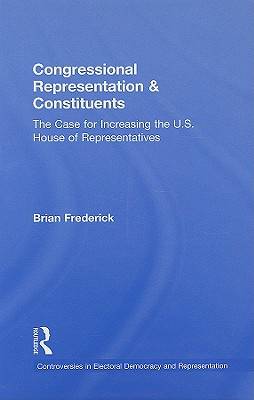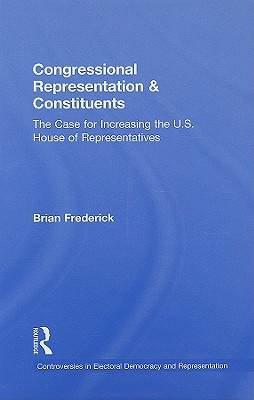
- Retrait gratuit dans votre magasin Club
- 7.000.000 titres dans notre catalogue
- Payer en toute sécurité
- Toujours un magasin près de chez vous
- Retrait gratuit dans votre magasin Club
- 7.000.0000 titres dans notre catalogue
- Payer en toute sécurité
- Toujours un magasin près de chez vous
Congressional Representation & Constituents
The Case for Increasing the U.S. House of Representatives
Brian FrederickDescription
The U.S. House of Representatives has been frozen at 435 members for almost a century, and in that time the nation's population has grown by more than 200 percent. With the number of citizens represented by each House member now dramatically larger, is a major consequence of this historical disparity a diminished quality of representation?
Brian Frederick uses empirical data to scrutinize whether representation has been undermined by keeping a ceiling on the number of seats available in the House. He examines the influence of constituency size on several metrics of representation--including estimating the effects on electoral competition, policy responsiveness, and citizen contact with and approval of their representatives--and argues that now is the time for the House to be increased in order to better represent a rapidly growing country.
Spécifications
Parties prenantes
- Auteur(s) :
- Editeur:
Contenu
- Nombre de pages :
- 182
- Langue:
- Anglais
- Collection :
Caractéristiques
- EAN:
- 9780415873451
- Date de parution :
- 01-12-09
- Format:
- Livre relié
- Format numérique:
- Genaaid
- Dimensions :
- 160 mm x 234 mm
- Poids :
- 385 g

Les avis
Nous publions uniquement les avis qui respectent les conditions requises. Consultez nos conditions pour les avis.






